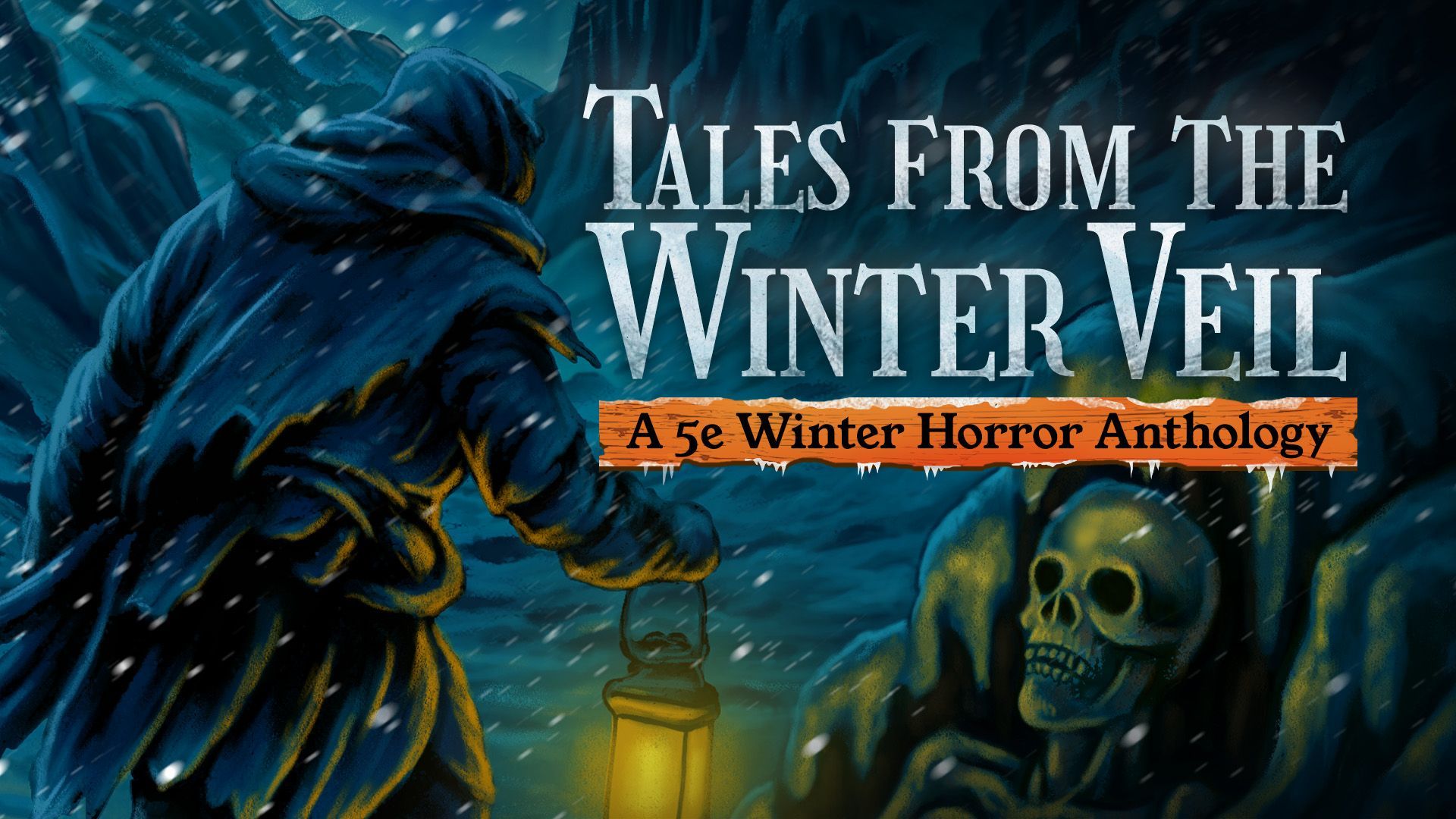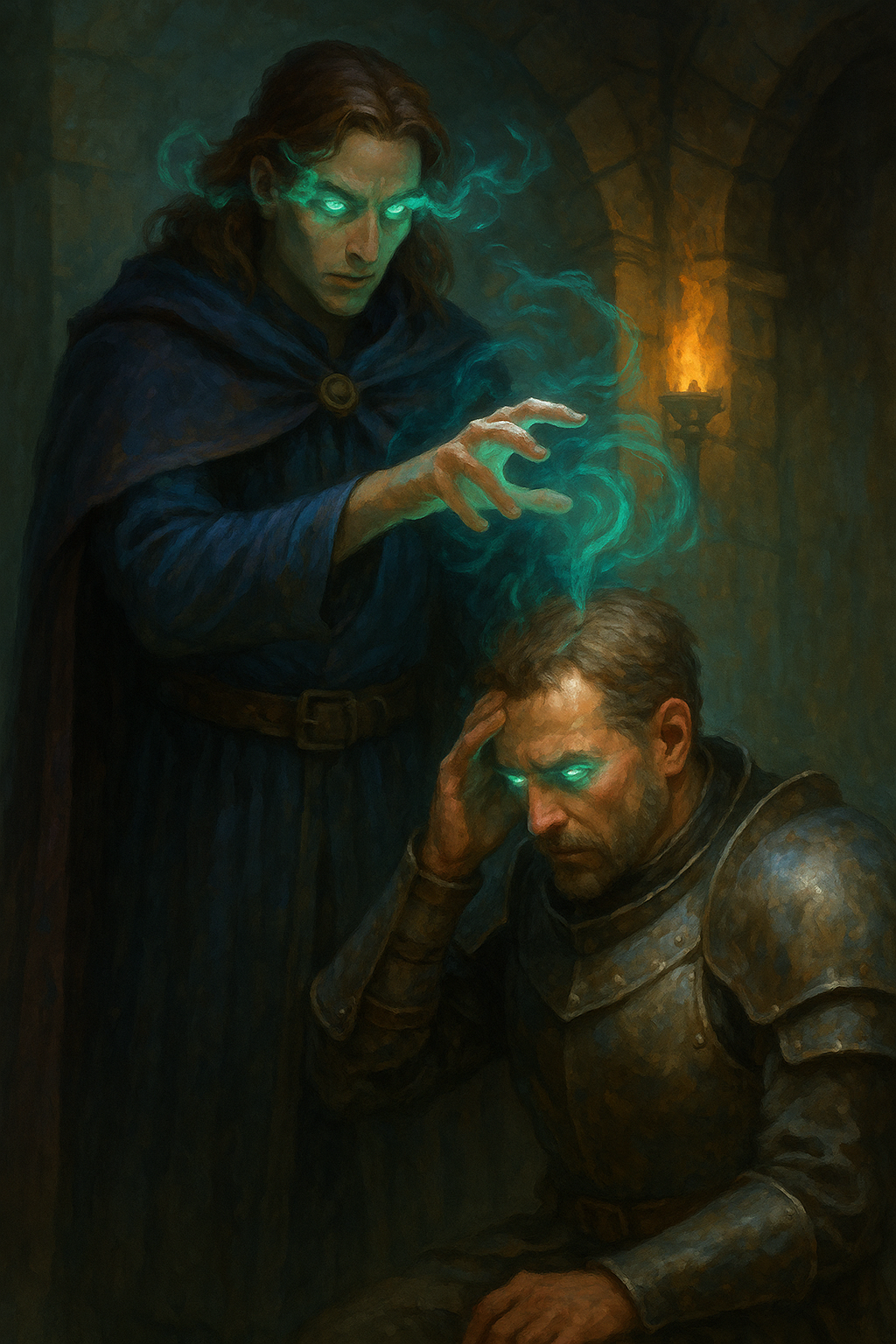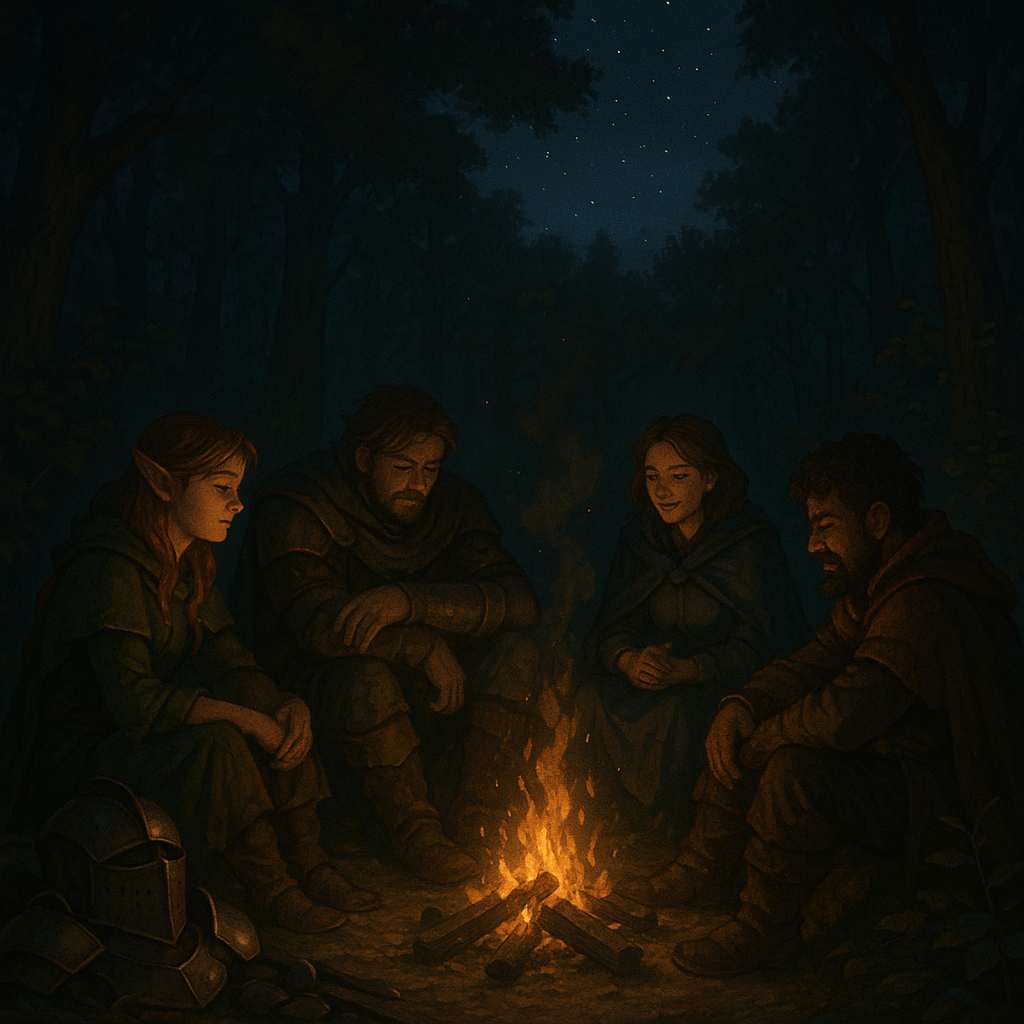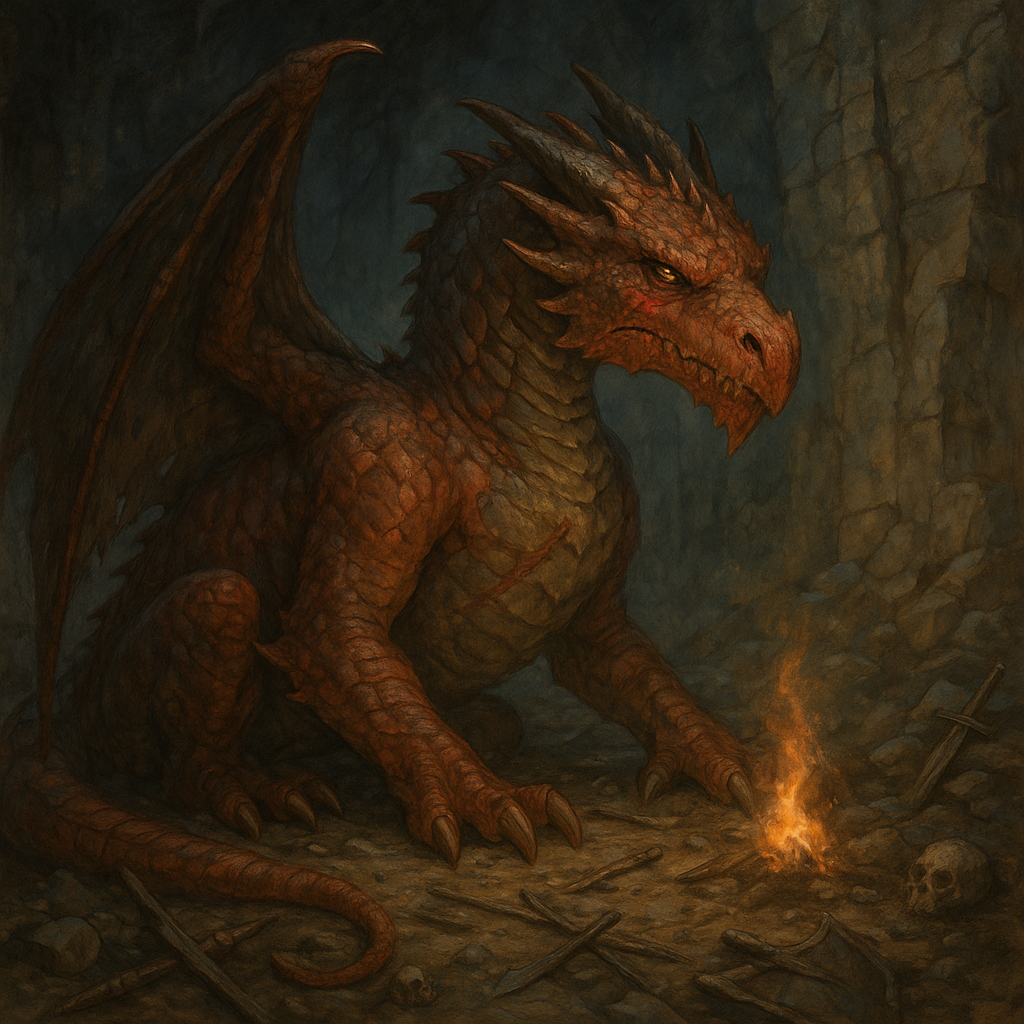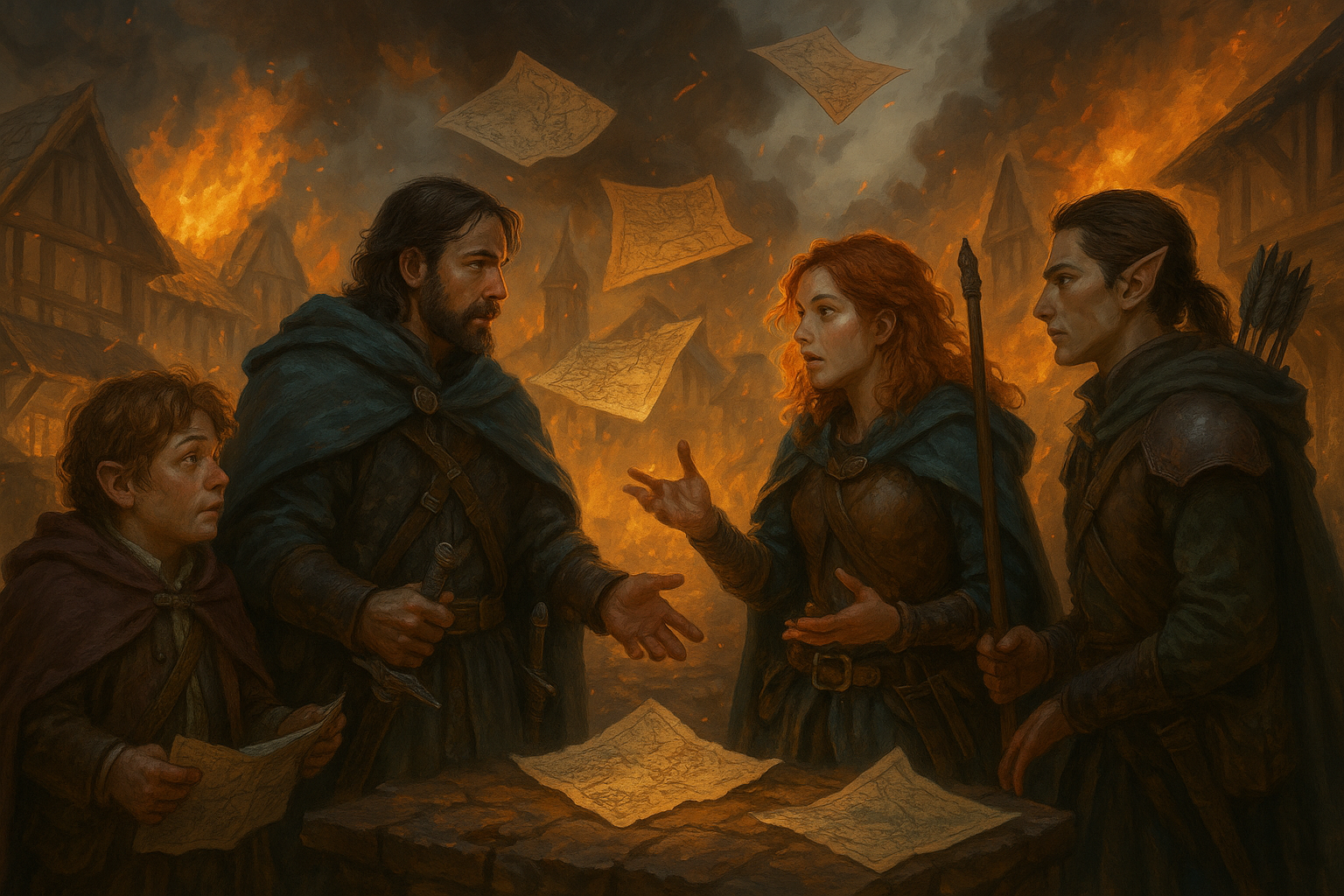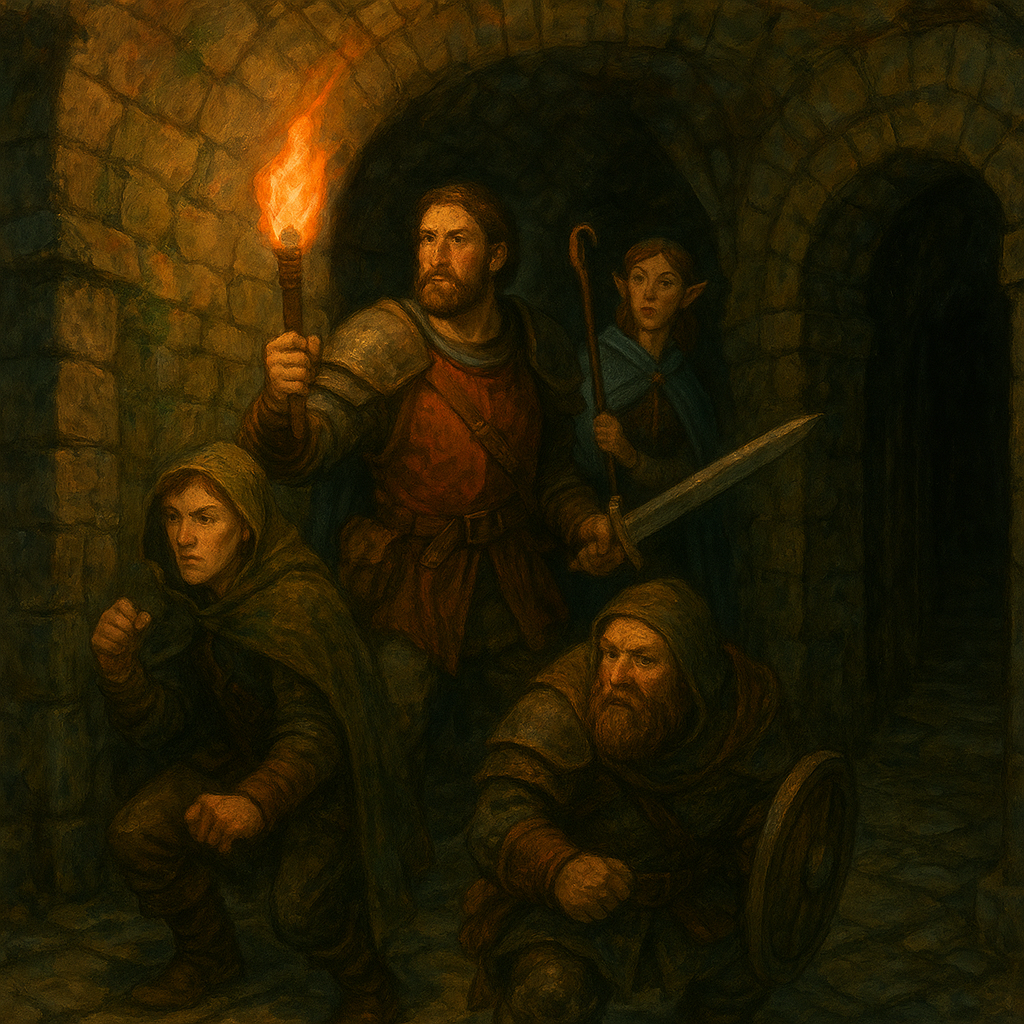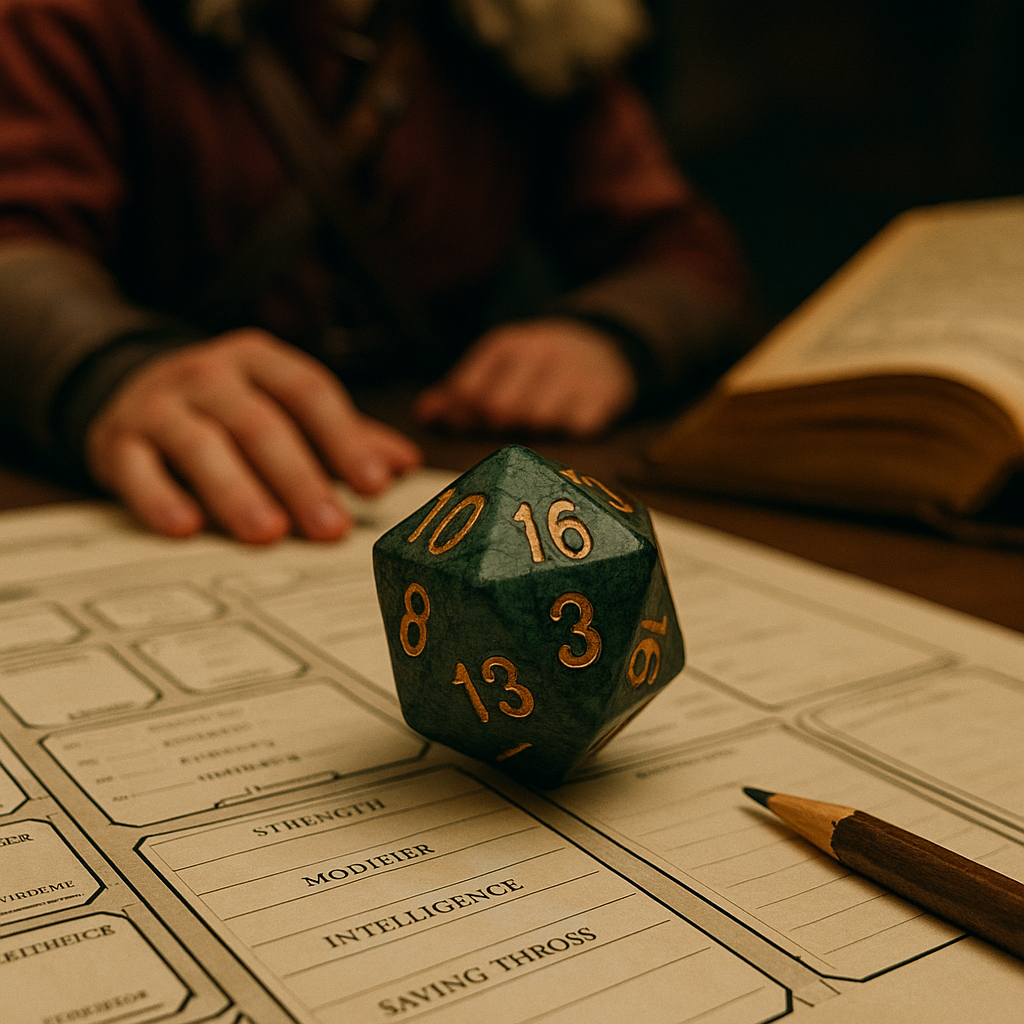“Eco-Horror in the Wilds: Adventures That Punish Industrialization”
manifest destiny and the fantasy industrial revolution has consequences
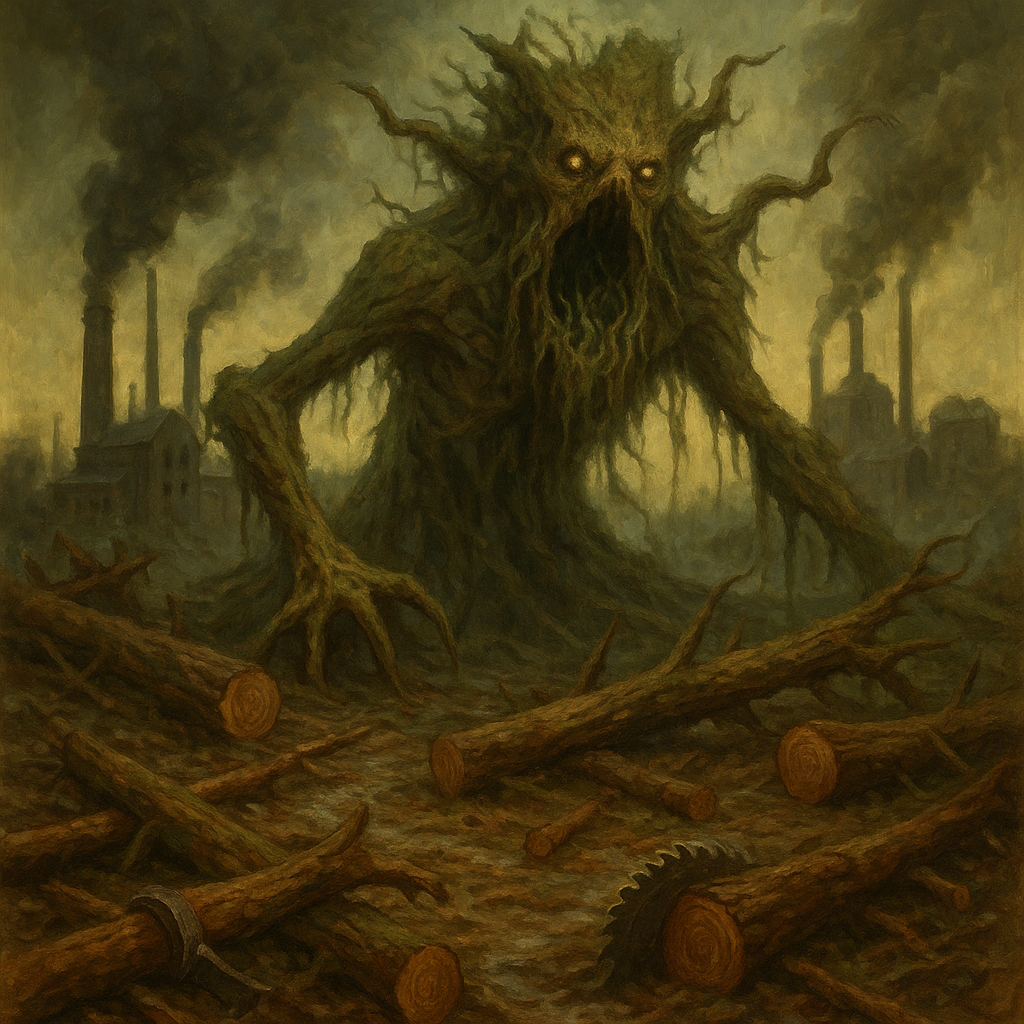
Dear Readers,
There’s something ancient in the woods—something furious, forgotten, and festering beneath the roots. Today, we venture deep into the creeping thorns of the wilderness, where axe and fire have scarred the earth and where nature claws back with vengeance. Welcome to the fertile ground of eco-horror in Dungeons & Dragons, where the wilds are not just dangerous—they’re outraged.
In this blog post, we’ll explore how to craft eco-horror adventures, develop stories that critique industrialization, and design monstrous manifestations of ecological trauma. Whether you’re a Dungeon Master interested in environmental themes or a player seeking moral complexity in your campaigns, this guide will help you build wilderness adventures with teeth, thorns, and timeless warnings.
Let’s brave the brambles together.
I. What Is Eco-Horror in D&D?
Eco-horror is a genre that explores humanity's destructive relationship with the natural world and the terrifying consequences that arise when the balance is shattered. It fuses environmental themes with horror tropes—unnatural weather, mutated wildlife, ancient curses, and vengeful nature spirits—to tell stories where the wild is not merely background but an active, wrathful force.
In a D&D context, eco-horror adventures might involve:
- Villages being swallowed by sentient forests
- Elementals corrupted by mining operations
- Old gods of the land awakening after centuries of silence
- Curses born from deforestation or pollution
- Groves transforming into portals to the Far Realm
The central theme? Nature is not passive. It’s watching, wounded, and ready to retaliate.
II. Themes of Industrialization and Ecological Consequence
The sword and sorcery genre has always had a paradox: while the wilderness is vast and unknown, civilization creeps ever outward. Most adventures center on towns, cities, and empires pushing deeper into hostile wilds—and rarely do we stop to ask what that wild might feel about it.
To bring eco-horror alive in your game, highlight these themes:
1. Greed and Expansion
Industrialization in fantasy often means lumber mills, mining towns, mage academies drawing ley-line power, and massive roads cutting through the wilderness. These are ripe opportunities to show how resource exploitation breeds backlash.
Example Hook: A new mithral vein discovered beneath an ancient forest causes animals to turn rabid and weather to become erratic. When miners go missing, the players must uncover that their operations have awakened an ancient protector spirit—The Verdant Maw.
2. Moral Ambiguity
Villains aren’t always cackling necromancers. Sometimes, they’re well-meaning entrepreneurs trying to feed a growing city or keep warm through winter. The horror comes not from malice but ignorance—ignorance of the cost.
Narrative Twist: The local noble funding the sawmill expansion isn't evil; she’s trying to save her people from famine. But every tree felled feeds a growing forest blight that spreads beneath the soil.
3. The Land Remembers
A core feature of eco-horror is that trauma lingers. The earth doesn’t forget.
Use ghosts, twisted creatures, or ambient effects to show that previous atrocities (like the destruction of druidic groves or poisoned rivers) leave lingering scars.
Atmospheric Element: A grove of petrified trees weeps blood at night. Locals call it “The Red Ring,” unaware it was the site of a sacred grove burned 200 years ago.
III. Constructing Eco-Horror Adventures
When building an eco-horror arc or campaign, use the following structure to ensure narrative cohesion and escalating dread.
1. Act I: Disruption of the Balance
Begin with signs of unnatural imbalance:
- Strange animal behavior (birds flying into windows, deer attacking travelers)
- Weather patterns that defy logic
- Farmers reporting withered crops, despite rich soil
- Unnerving dreams or hallucinations among locals
Adventure Hook: A remote town has experienced three weeks of rain, turning farmland to swamp. The church bell rings by itself, and newborn animals are born with extra limbs. The mayor begs the party to find the source of the “curse.”
2. Act II: Investigation and Revelation
Players uncover that a new industry—be it logging, mining, or spellcasting—is disrupting ancient natural forces. This is where horror creeps in.
- Druid circles razed for farmland
- Spirits crying out in ley-line ruptures
- Dryads turned into banshees from grief
Set Piece Encounter: In a logging camp, the felled trees still whisper at night. The loggers speak in their sleep with voices not their own. When questioned, they claim they’re “only helping the roots scream louder.”
3. Act III: Nature Strikes Back
The full force of nature awakens. Trees move. Rivers flood. Monsters rise. The land itself becomes hostile.
- Vine-covered undead called Greenwalkers
- Elementals mutated by alchemical runoff
- A forest that rearranges itself to trap intruders
Climactic Event: The corrupted forest erupts with a primal roar—an ancient guardian, half-tree, half-god, awakens to crush both the town and the party unless appeased.
IV. Monsters as Manifestations of Ecological Horror
Eco-horror demands monsters that aren’t just dangerous—they’re symbolic. Here are several homebrew ideas and thematics you can adapt to your setting.
1. The Verdant Maw
A massive, ambulatory root-knot with a vertical, moss-filled mouth. It whispers the thoughts of every creature it has devoured and grows stronger the more pollution it absorbs.
- Abilities: Swallows creatures whole, controls plant growth, mimics voices.
- Symbolism: Nature feeding on the destruction of itself to survive.
2. Fungus of the Forgotten
A sentient fungal network that blooms where blood has soaked into the land. It uses humanoid corpses as ambulatory bodies (zombies) to carry its spores into new areas.
- Abilities: Spore burst, memory assimilation, body puppetry.
- Symbolism: Nature repurposing death into vengeance.
3. The Coalwight
An elemental spirit born from centuries of underground mining. Its body is a smoldering amalgam of ore, soot, and trapped screams.
- Abilities: Ignites in darkness, feeds on breath, blights crops.
- Symbolism: The buried consequence of greed.
4. Dryad Wraiths
When their trees are felled, some dryads don’t die—they become wraiths, haunting the stumps and using sorrow as fuel for rage.
- Abilities: Psychic scream, rot touch, vanish into dead wood.
- Symbolism: The pain of nature betrayed.
V. Environmental Hazards as Storytelling Tools
Nature itself can act as a dungeon and antagonist. Incorporate hazards that feel purposeful, like the world is defending itself.
1. Sentient Terrain
Forests that rearrange paths, leading players in circles or to traps. Rivers that split at will. Trees that scream when cut.
Example Mechanic: DC 15 Wisdom (Survival) check to navigate each hour. On failure, the forest rewrites itself, returning players to a clearing they left long ago—with time having passed unnaturally.
2. Blighted Weather
Use magical storms, choking fogs, or unnatural heat as signs of imbalance.
Scenario: Acidic fog from a poisoned river rolls through the valley each dusk, corroding armor and flesh. Locals call it “The Breath of the Green Queen.”
3. Haunted Earth
Places once fertile now sap life from those who tread them.
Effect: Characters who sleep in these lands must make Constitution saves or gain a level of exhaustion, plagued by dreams of screaming roots and crumbling mountains.
VI. Eco-Horror NPCs and Factions
No horror tale is complete without compelling NPCs—both victims and perpetrators.
1. The Ashroot Circle
A druidic order torn between protecting the wilds and exacting revenge. Some want peace. Others want to reclaim the land with fire.
Role in Story: Allies, villains, or both. Their leader may try to recruit the PCs—or execute them.
2. Mayor Halden Rigg
A tired, practical man who greenlit the mining project that started it all. He regrets nothing—yet.
Potential Arc: Over time, he’s slowly possessed by a corrupted earth elemental, turning him into an unwitting avatar of industrial madness.
3. Eila of the Briar
An exiled elven seer who lives in a thicket-bound hut, protected by carnivorous vines. She knows the truth and offers cryptic warnings.
Character Detail: She lost her lover—another druid—when their grove was destroyed by settlers. She’s still mourning… and plotting.
VII. Moral Complexity and Player Agency
Eco-horror should never feel preachy or one-note. The strength of these stories lies in tension—between survival and harmony, progress and preservation.
Give players difficult choices:
- Shut down a mine and doom the town’s economy—or let it continue and face nature’s fury
- Side with wrathful druids and risk becoming eco-terrorists—or defend civilization and face the cost
- Kill the corrupted guardian—or find a way to cleanse it, which may require sacrificing townspeople or even party members
Let your players wrestle with these decisions. Let the consequences echo.
VIII. Thematic Adventure Ideas
Here are three adventure frameworks to drop into your campaign or use as springboards for eco-horror arcs.
Adventure 1: “The Sawmill Song”
Level: 3–5
Hook: Lumberjacks begin vanishing near an old grove, and strange singing is heard at dusk.
Plot: The party investigates, finding that dryads whose trees were cut down have become malevolent spirits. Their song draws loggers into the woods to kill them or transform them into trees.
Climax: A dryad queen demands the party destroy the mill or face nature’s judgment. The party must decide: shut it down, negotiate, or slay her and deal with the consequences.
Adventure 2: “Iron in the Earth”
Level: 6–8
Hook: Miners uncover a vein of glowing black ore—but those who handle it become violent and paranoid.
Plot: The ore is the petrified blood of a slumbering earth primordial. Disturbing it awakens corruption across the land.
Climax: The party must descend into the mine’s deepest shaft and confront the Primordial’s dreaming mind—a battlefield of psychic torment and ancient memory.
Adventure 3: “Ashes of the Grove”
Level: 9–11
Hook: A powerful druid calls for help: the balance is breaking, and the Weeping Forest burns from within.
Plot: An alchemist’s experiments have poisoned the ley lines, spawning twisted flora-monsters and severing divine connections.
Climax: The forest’s heart becomes a zone of pure chaos. The party must restore the ley lines or witness the forest tear itself out of reality.
IX. Long-Term Campaign Arcs
For DMs interested in running entire campaigns rooted in eco-horror, consider a region-spanning conflict where nature slowly retakes the world:
- Act I: Towns begin losing crops and suffering supernatural events
- Act II: Druidic factions rise, monsters spread, and the gods of nature awaken
- Act III: Civilization collapses in the face of eco-magic, forcing the party to choose between restoring balance or seizing control
Let seasons change unnaturally. Let gods fall silent. Let plant life reclaim the streets.
X. Tools, Systems, and Resources
To make eco-horror sing at your table, consider integrating:
- Unearthed Arcana: Druid Circles and Ranger Archetypes: New classes or subclasses centered on nature and decay
- Third-Party Supplements like Grim Hollow or The Wretched Wilds, which add grim ecological tones
- Soundscapes: Use audio—like distant storms, whispering forests, or creaking roots—for immersion
- Custom Mechanics: Introduce “Nature’s Disfavor” points—accrued when players harm the land and used by the DM to trigger narrative events
XI. Closing Thoughts: Why It Matters
Eco-horror in D&D isn’t just a narrative experiment—it’s a mirror. When we play through these stories, we confront questions we face in real life: What do we owe the land? What happens when progress forgets responsibility? How long can nature suffer before it pushes back?
These aren’t stories of guilt. They’re stories of awakening.
By wrapping these themes in fantasy, we explore them with wonder, terror, and meaning. We become witnesses to consequences, champions of balance, or agents of destruction. And that makes for unforgettable storytelling.
Whether your players choose to defend civilization or abandon it for the old ways, they will remember the time the woods spoke back, the roots reached out, and the land bit back.
May your roots run deep, and your stories echo like thunder through the canopies.
Until next time, Dear Readers...
















